ENDOCRINOLOGY
Optimize patient care and long-term outcomes
Disclaimer: InBody devices should be used as an adjunct tool for clinical decision-making and are not intended to diagnose or treat any diseases.
Why is body composition analysis an effective tool for endocrinology?
As studies have shown that increased muscle mass may help to prevent gestational diabetes from progressing to type 2 diabetes in women (Shin, et al., 2022), the importance of monitoring body composition then becomes important to avoid risks and tailor patient treatment plans accordingly.
Additionally, body composition analysis can aid healthcare providers in tracking changes in body water levels, enhancing patient care by assessing and treating fluid imbalances. (Yang, et al., 2022).
In less than 70 seconds, healthcare providers receive an InBody Result Sheet (body composition printout) that can aid in:
- Assessing patient risk, enhancing treatment plans
- Monitoring fluid imbalances to mitigate inflammation
- Tracking body composition changes and guiding interventions
Empowered by objective data, below are several examples of how healthcare providers can more effectively evaluate and improve patient treatment plans and long-term outcomes by incorporating InBody body composition parameters.
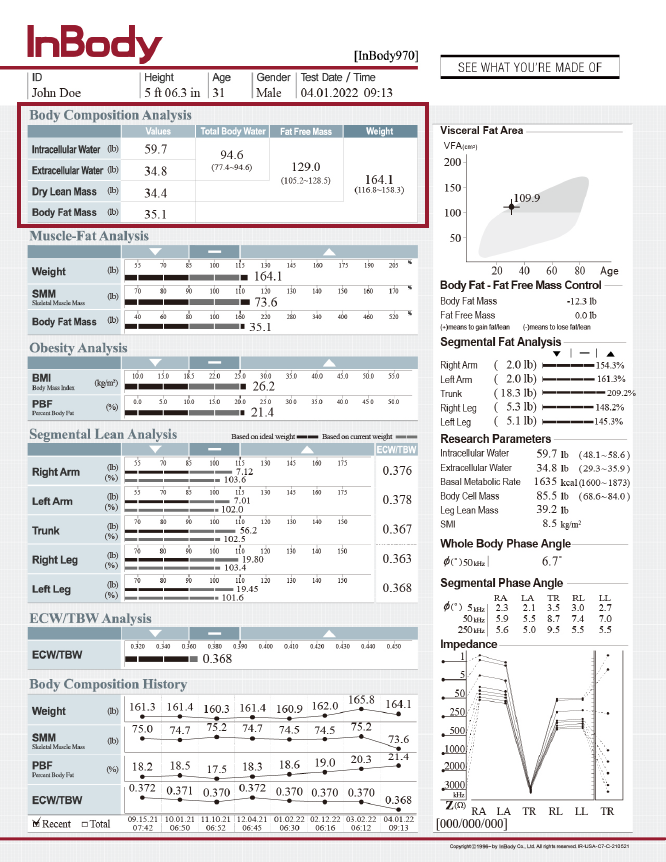
BODY COMPOSITION ANALYSIS
Gain insights into how baseline body composition may affect treatment outcomes.
Graves’ disease is an autoimmune disease that is the most common cause of hyperthyroidism and mostly affects adults ages 30 to 50 years old. In 2022, a study by Cai, et al., looked at weight and body composition changes of seventeen patients with Graves’ disease undergoing radioiodine treatment. They found that patients with higher body fat and lower lean mass at the beginning of the treatment developed excessive weight gain with treatment, with body fat gain being higher than that of controls. It may be important to consider an individual’s body composition before treatment, to improve outcomes.
MUSCLE-FAT ANALYSIS
Gain insights into the distribution of muscle and fat in the body.
Skeletal muscle mass (SMM) refers to the muscles that are attached to bones and are responsible for movement, as shown by the Cleveland Clinic. In 2019 Kwak, et al assessed patients with primary aldosteronism (PA) to investigate the effects of aldosterone on SMM in this population. The results found that women with PA had lower SMM than women with non-functioning adrenal incidentaloma (NFAI). Also, measures of SMM were used by Seko et al (2022) in 194 nondiabetic older adults to examine the roles of sarcopenia indexes in the prevention of insulin resistance development.
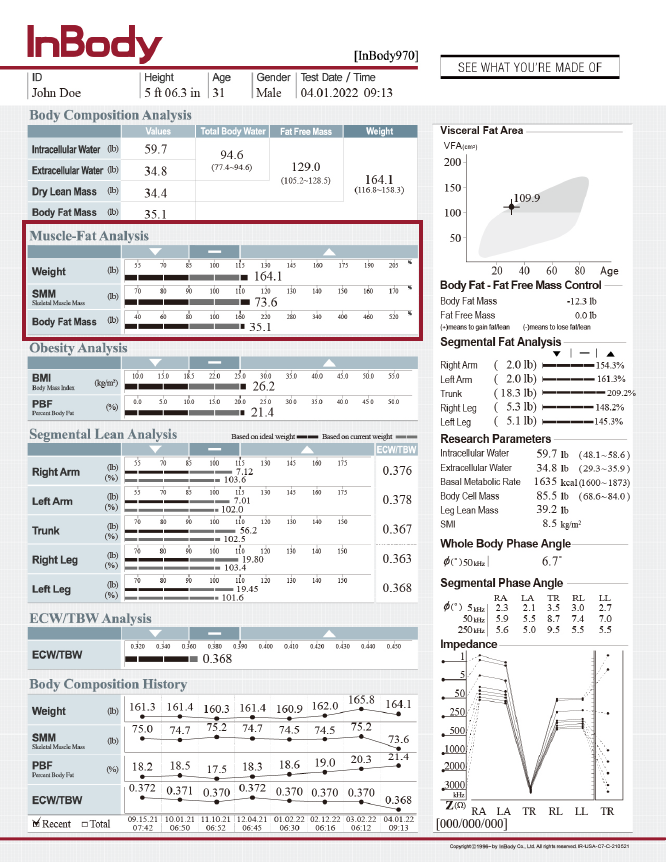
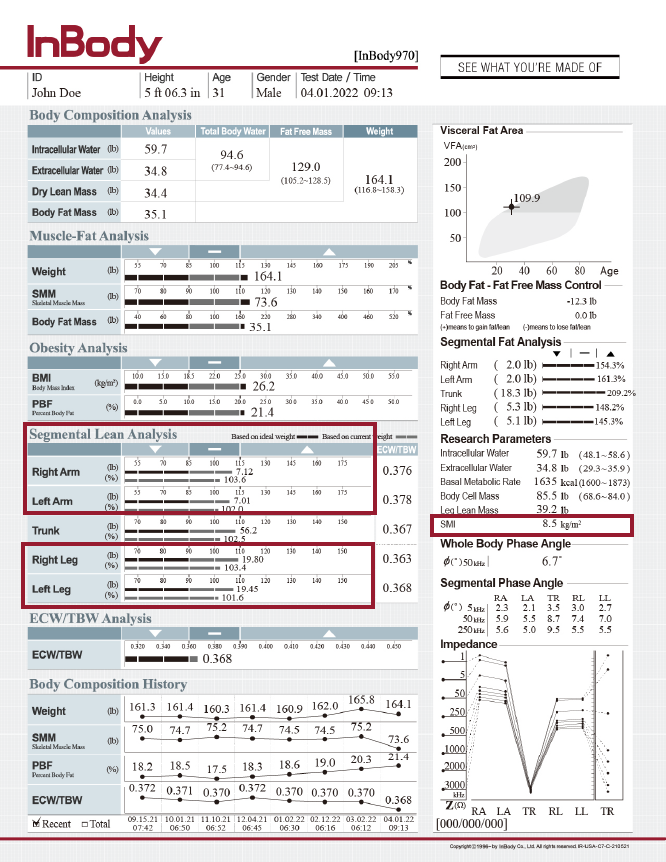
SKELETAL MUSCLE MASS INDEX
Assess factors related to changes in muscle mass.
Appendicular skeletal muscle (ASM) includes the muscle mass in both the upper and lower extremities, as seen in the Segmental Lean Analysis section of the InBody Results. It is used to calculate the skeletal muscle mass index (SMI) and gives information about lean mass in a patient’s arms, trunk, and legs.
In their 2021 study, Chen et al used measures of skeletal muscle mass index (SMI) to evaluate the relationship between body composition and thyroid function in patients with type 2 diabetes. The authors found that “thyroid function is more likely to affect the fat and muscle distribution of males than females”.
OBESITY ANALYSIS AND VISCERAL FAT AREA
Changes in body fat can improve patient outcomes.
Polycystic Ovary Syndrome (PCOS) is a common endocrine disease that affects women in their reproductive years. Signs and symptoms can be more severe in obese individuals. A study by Li, et al., 2021 found that a time-restricted feeding intervention was helpful not to reduce just weight, but specifically body fat, percent body fat, and visceral fat area (VFA). It also helped improve menstrual cycle irregularity in 73.3% of the patients and showed improvements in hyperandrogenemia, insulin resistance, and chronic inflammation.
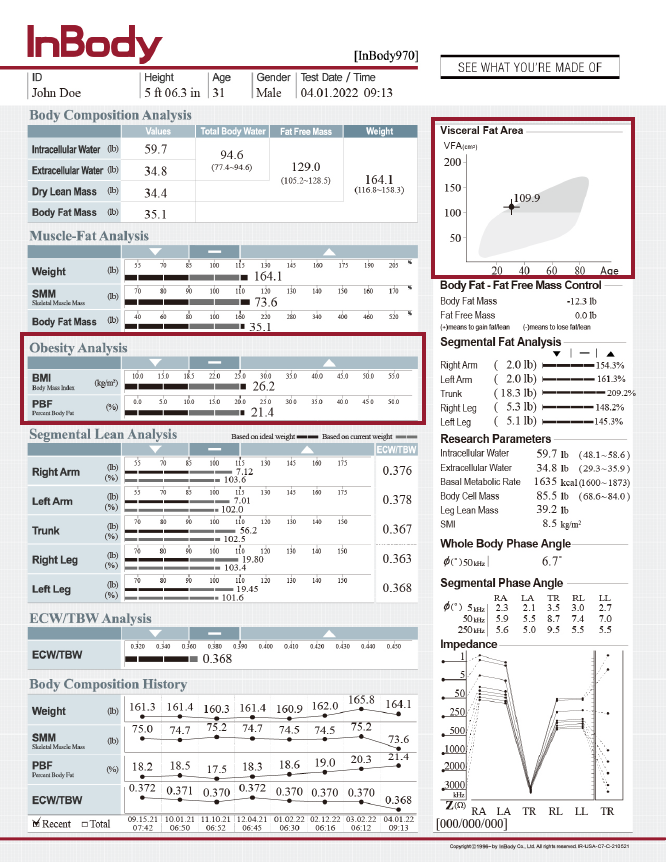
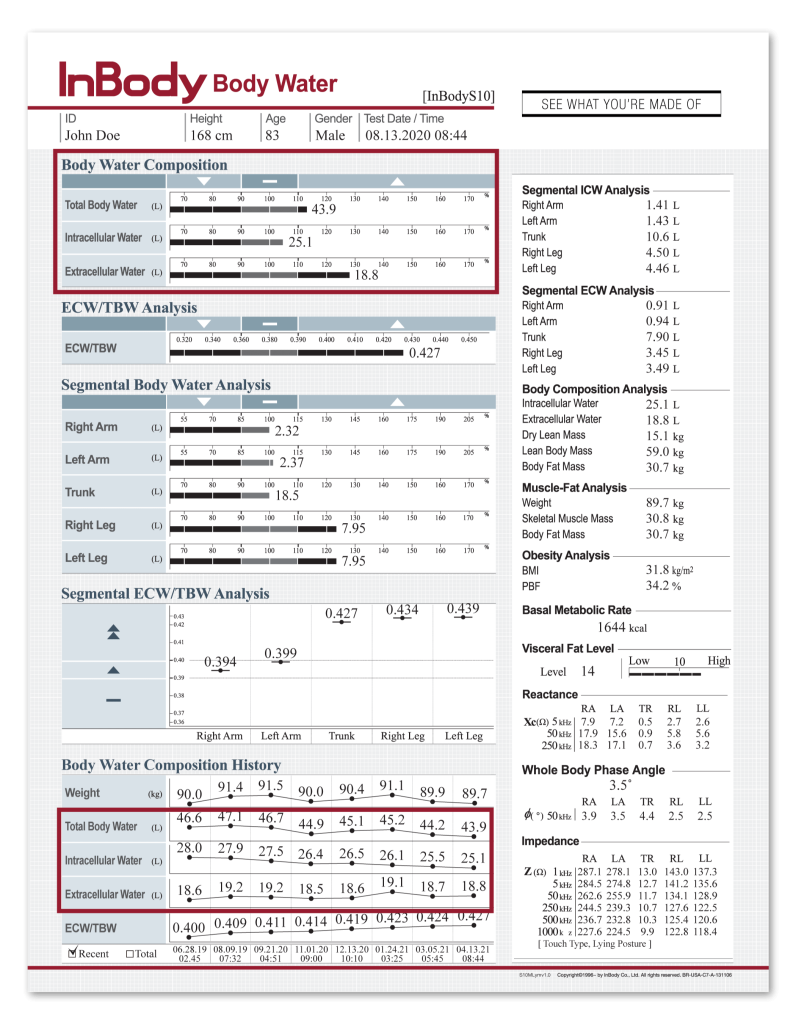
BODY FLUID ANALYSIS
Evaluate fluid imbalances in athletes.
Despite the many benefits of physical activity, elite athletes can be affected by overtraining syndrome OTS), when they do not get enough time/sleep to recover. In a 2019 study published by Frontiers in Endocrinology, Cadegiani, et al. analyzed measures of total body water (TBW), extracellular water (ECW), and possible combinations of the Endocrine and Metabolic Responses on Overtraining Syndrome (EROS) “to reveal independent predictors and linear correlations among the parameters evaluated in the EROS study to predict clinical, metabolic, and biochemical behaviors in healthy and [overtraining syndrome] OTS-affected male athletes”. The study concluded that muscle mass was directly associated with TBW/BW (BW: body weight; hydration) and that ECW/BW (edema) was directly associated with body fat, but negatively associated with TBW and muscle mass. Also, energy levels and better hormonal responses were correlated with better body composition.
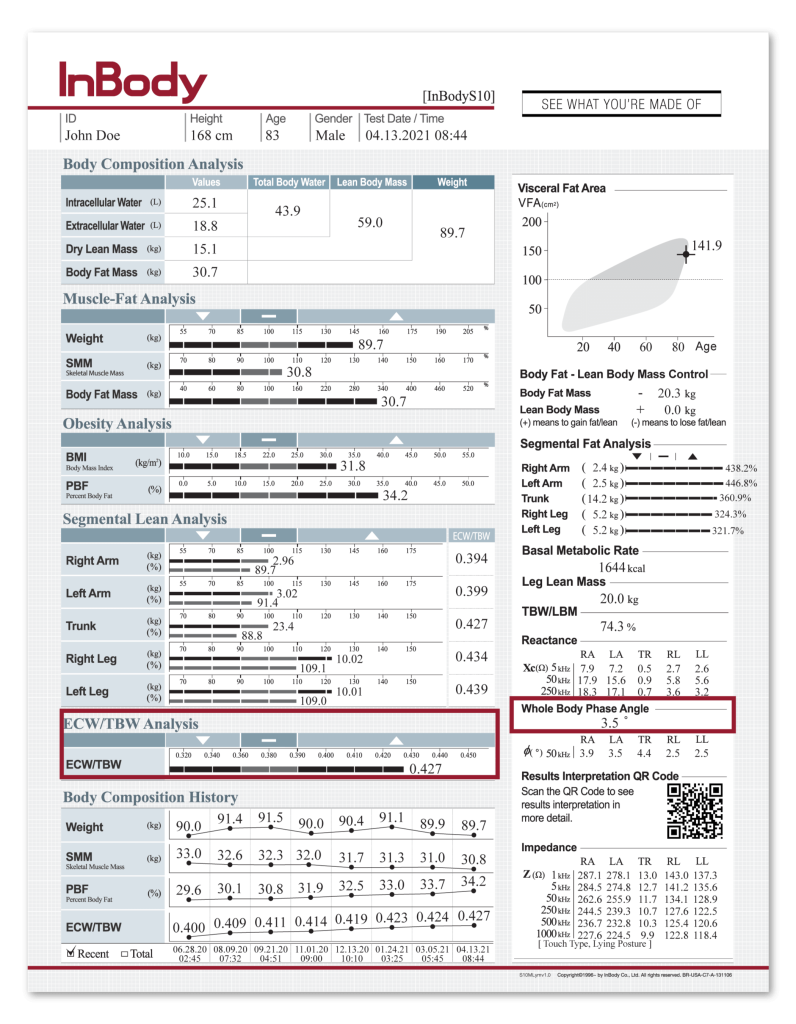
WHOLE BODY PHASE ANGLE AND ECW/TBW RATIO
Understand health status to provide individualized interventions.
The significance of phase angle (PhA) and ECW/TBW ratio for anemia in patients with type 2 diabetes was shown by Hori, et al, 2023, who found they are positively associated with hemoglobin (Hgb) and hematocrit (Hct) levels in patients with type 2 diabetes. The authors found that “PhA and ECW/TBW, but not SMI, were associated with levels of Hgb and Hct in patients with diabetes”, showing that values deviating from the norm suggest anemic risk in patients with diabetes.
Contact Us
We’d love to hear from you.
Use the form below to send us a message!
InBody HQ
Address
625, InBody Bldg., Eonju-ro,
Gangnam-gu, Seoul 06106, Korea
Homepage
www.inbody.com
Tel
82-2-501-3939
Fax
82-2-578-5669
E-mail
info@inbody.com
InBody BWA
Address
2550 Eisenhower Avenue,
Suite C-209
Audubon, PA 19403
Homepage
www.inbodybwa.com
bwainquiries@inbody.com
InBody MEXICO
Address
Ciudad de Mexico, Mexico
Homepage
www.inbodymexico.com
Tel
55-5025-0147
Fax
–
E-mail
info.mx@inbody.com
InBody ASIA
Address
Unit 3A-11, Oval Damansara,
685 Jalan Damansara,
Kuala Lumpur 60000, Malaysia
Homepage
www.inbodyasia.com
Tel
60-3-7732-0790
Fax
–
E-mail
info@inbodyasia.com
InBody CHINA
Address
904, XingDiPlaza, No. 1698 YiShanRoad, Shanghai 201103, China
Homepage
www.inbodychina.com
Tel
86-21-6443-9705
Fax
86-21-6443-9706
E-mail
info@inbodychina.com
InBody EUROPE
Address
Gyroscoopweg 122, 1042 AZ, Amsterdam, The netherlands
Homepage
nl.inbody.com
Tel
31-20-238-6080
Fax
31-6-5734-1858
E-mail
info.eu@inbody.com
InBody JAPAN
Address
Tani Bldg., 1-28-6, Kameido, Koto-ku, Tokyo 136-0071, Japan
Homepage
www.inbody.co.jp
Tel
81-3-5875-5780
Fax
81-3-5875-5781
E-mail
inbody@inbody.co.jp
InBody INDIA
Address
Unit No. G-B 10, Ground Floor, Art Guild House, L.B.S. Marg, Kurla (West), Phoenix Market City, Mumbai 400070, India
Homepage
www.inbody.in
Tel
91-22-6223-1911
Fax
–
E-mail
india@inbody.com
Copyright© 2024 by InBody BWA. Inc. All rights reserved.
